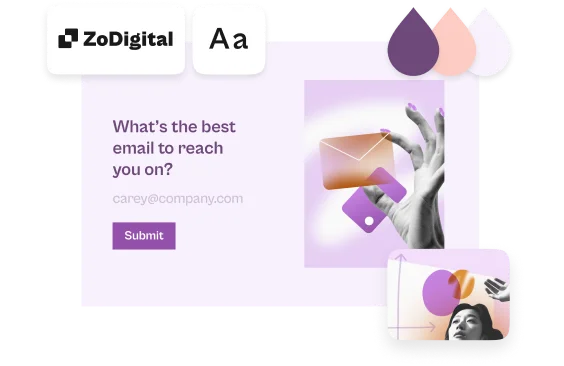How to automate your catered lunch menu selection process
Back in the days before we went remote-first, one of the perks at Typeform was free lunches. Logging the dietary requirements of 180+ hungry Typeformers was tricky, so Pep, our Employee Engagement Specialist, automated the process.
In this article, you'll learn:
- How to create a menu selection typeform.
- How to connect your typeform to Mailchimp, to send it to everyone who needs to submit food preferences.
- How to send the results of your typeform to Google Sheets, so that you have a clear list to send to the caterers.
If you’re offering a menu of options to a large group of people for any event or get together (especially on a regular basis like we do), just follow these instructions.
Step 1. Create your menu typeform
First you’ll need a typeform built for weekly lunch menu selection. This is what the typeform we use for this looks like:
Once you have your typeform ready, enable Hidden Fields and set up respondent notifications.
Step 2. Configure your MailChimp distribution list
Go to your MailChimp account and create a list using the emails of the hungry peeps who’ll be receiving the weekly menu selection email. Find the instructions on how to create a new list here.
This is an example of what Pep sees when he looks at his distribution list:

Step 3. Create a MailChimp campaign
Create a campaign for the distribution of your weekly lunch menu selection form.
Here’s what I see when I get Pep’s email from MailChimp:

You can create your campaign and use Hidden Fields to…
- Use merge tags to make it personal and address your customers by their first name
- Add a button that launches the typeform
- Pass email and name variables into the typeform.
Here’s how:
3.1 Setting up merge tags (makes every typeform personal by using people’s names)
Merge tags are great for sending mass emails and they ensure that each recipient gets a personalized message. For instance, Jon will see “Hello Jon” while Reka will receive the same content with “Hello Reka” in the email:
In fact, you can use merge tags to specify the recipients as well:

Here’s how you can use merge tags with MailChimp: Getting Started with Merge Tags
3.2 Adding a button that launches your typeform
Use a Button content block in MailChimp to add a button that launches the menu selection typeform you built.

3.3 Getting the email and name variables into your typeform
To pass the email and name variables into the typeform, add merge tags to the link attached to the button:

In this example we’ve passed two values to the typeform using Hidden Fields: first name (FNAME) and lastname (LNAME). If you get stuck, read this Help Center article for a detailed guide.
Step 4. Send results to a Google Sheet shared with the caterers
Finally, connect your Typeform to a Google Sheet to share weekly food choices with your caterers. They can analyze the data, know how much to prepare, and get cooking.
This is an example of what our caterers saw in their spreadsheet (when Wednesday was a public holiday):

If you found this useful, check out 21 more ways that Typeform uses typeforms.



